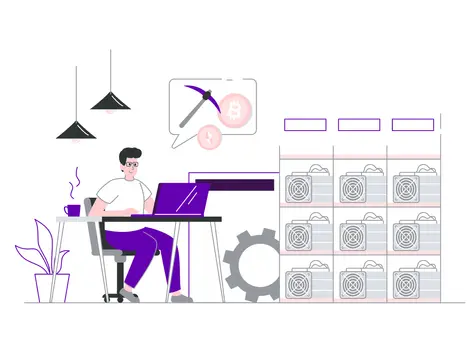Learn How to Earn with Cryptocurrency Staking
Crypto staking is a way to "lock" your cryptos to participate in validating the consensus of the blockchain and receive a reward for it.

Proof-of-staking (PoS), or just crypto staking, is a way to allocate your cryptocurrencies to act in blockchain consensus validation and receive a reward for it. In short, you'll make your cryptocurrencies yield, analogously to crypto savings. Unlike proof-of-work (which relies on mining), PoS requires low energy consumption and is generally less expensive, making room for any investor type in crypto in the staking pool. The staking yields will depend on the network protocol. Further, this is a type of medium and long-term investment, very interesting for those who practice hodl (buys and keeps the cryptos with them). You can easily stake through wallets and exchanges that offer this service.
Let's talk about crypto staking?
Cryptocurrencies investing includes dealing with high volatility, with no possibility of knowing how much return exactly you will get. In fact, be careful with exorbitant and pre-defined returns on crypto investments because they're probably irregular practices and most likely not delivered at all. But what if I told you that there is a way to make your cryptocurrencies "work" to generate extra revenue? It's called staking; you get rewards for temporarily "locking" your cryptocurrencies into a blockchain protocol. So they can yield even more while you practice hodl (long investment term, you buy your cryptocurrencies and hold them with you). We can say that staking is somewhat a crypto savings account.
To understand how staking works, let's first keep in mind that blockchain (link) technology uses a consensus algorithm to validate transactions performed on the network. Every transaction block is validated before being added to the blockchain. This process takes place in mainly two ways: through proof-of-work (Pow), which relies on mining to validate transactions, and proof-of-stake (PoS), which takes into consideration staked tokens to apply the consensus mechanism and validate transaction blocks.
Better understanding of each type of validation
Proof-of-work: In PoW, blockchain transaction validation is performed through mining. That means providing computational power to compete in finding a mathematical solution that validates the block to be included in the blockchain. The hardware will be performing this action uninterruptedly, demanding a lot of energy. Mining is a costly process due to deployment of high performance equipment and high energy consumption. Miners, who make computational power available for this purpose, are remunerated in cryptocurrencies. Bitcoin is an example of cryptoasset that uses mining on its blockchain consensus mechanism.
Proof-of-stake: As an alternative to PoW, PoS consensus has been released in newer protocols. In this case, it's not competing computer power that decides who is minting new blocks, but instead a kind of "raffle" among stakeholders. Requirements in terms of computational power availability and minimum staked quantities may apply. In this process, the more cryptocurrencies a stakeholder makes available, the more validations it will do, and consequently the remuneration will be higher. It is advisable that the investor who is responsible for the stake should understand the technical aspects of the protocol.
Staking Pools: A cryptocurrency unit can cost more than US$ 20,000. That's why many people buy only a fraction of cryptocurrency, which allows buying crypto in small amounts. In order to stake smaller values, without the need to have many cryptos, and to make a computer available just for this process, you can join a staking pool, making your assets available through third parties. You can apply your cryptos without having technical knowledge because the administrator of your pool will carry out the process, and you will receive proportional remuneration for how much you staked. Such service today can be offered by some cold wallets (cold wallets) and exchanges.
How much can I earn with staking?
Each network has its PoS protocol, which defines the minimum number of cryptocurrencies to be locked. The remuneration value and even the need, or not, of "blocking" its cryptos for a given period.
Important highlights: As in mining, you will receive your remuneration in cryptoassets. Therefore, cryptocurrency price volatility also influences your total returns even if the yield percentage does not change.
Here you can check the staking conditions of each protocol.
How to invest correctly?
When you invest in staking, you agree to make your crypto available to support a specific network validating transactions. Whether you are participating in a staking pool or not, you will leave your cryptos unavailable while generating income. In this scenario, it doesn't make sense to apply cryptos that you intend to use or sell in the short term, as you may take a while to get them out of staking (this withdrawal time will also depend on the rule of the protocol you stake in).
Research the protocols, understand the conditions of the pool you intend to join, and let your crypto work!
Keep learning about crypto with DG Fresh!



